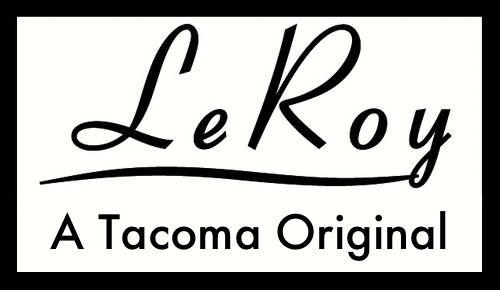Things To Know
Understanding Jewelry Ads
A LeRoy Jewelers original! 14KWG earring jackets with 0.16 c.t.w. diamonds. Shown on 0.20 c.t.w. 14KW diamond studs
Dealing with Diamonds
Carat with a “c” describes the weight of a gemstone. One carat = one hundred points, so diamonds under 1 carat are described in fractions or "points." 1/2 ct = .50 ct or fifty points, 1/4 ct = .25 or twenty- five points, 1/10 ct = .10 or ten points and 1/100 ct = .01 or one point.
Total weight or total carat weight refers to the weight of all diamonds in the piece or sometimes in the set. For instance, that gorgeous pair of diamond earrings with a 1/2 ct.t.w. means that each earring has one 1/4 ct diamond. Or, that 1/2 carat total weight could be made up of 50 one-point diamonds or 100 half-point (almost invisible by themselves) diamonds.
Invisible set diamonds are gems which have no apparent means of support. No prongs show in the piece so the item looks smooth, brilliant and beautiful. However, when the diamonds become loose - and they often do - repairing them can be difficult and costly. Invisible set gemstones need tender, loving care.
Abbreviations
ct = carat, the weight of a single gemstone.
ctw, tcw, or twctw, tcw, or tw = total carat weight of all the gems in a single piece of jewelry.
g.p. = gold plated
g.f. = gold filled
FWCP = freshwater cultured pearl
SSCP = south sea cultured pearl
k = karat (gold quality)
ss or 925 = sterling silver
wg = white gold
yg = yellow gold
Plat or 10% Irrid Plat = platinum
g.f., l.g.f. = glass filled or lead-glass filled, a treatment found in less costly rubies and sapphires. Great look but not durable and requires very careful care. If your piece has glass-filled gems, tell your jeweler before any work is done. And remember: if it sounds too good to be true, it probably is. Know what you're buying!
Steph, creating heirlooms and magic at his bench in our shop.
Golden Facts
Karat with a “k” describes the purity of gold. The higher the number, the higher the gold content, the brighter the yellow- orange color and the softer the metal. Pure gold is 24k. 14k means 14 parts out of 24 parts are pure gold. Most gold jewelry in this country is 14k or 18k but you might find 10k. Recent FTC changes allow an item with only 1% gold content to be labeled "Gold." Look for the number stamp.
Gold Plated is a thin layer of gold which has been electrically applied to another metal, often copper, sometimes brass. Vermeil is gold plated on sterling silver.
Gold Filled is a thin layer of gold fused to another metal. This is a more durable treatment than gold plating. 5% of the weight of a gold filled piece must be gold.
The thickness of a coating may be indicated by a number. Gold filled jewelry must have 5%, or 1/20th of its weight in gold.
Plating and filling give a lovely look and might last for years, but depending on how much it is worn, the gold will wear off over time.
Ruby - and now Sapphire - When a Great Deal is a Bad Bargain
We're concerned.
We expect your jewelry purchases will give you--and even your children and grandchildren--pleasure for years to come. But for some years now, we've been seeing rubies and sapphires in the marketplace that won't begin to fulfill that expectation. They are called glass filled (g.f.), lead glass filled (l.g.f.) or composite rubies and sapphires, and while they can indeed be beautiful and relatively inexpensive, they come with some major drawbacks that even some salespeople may not know about.
Magnified glass filled ruby showing tell-tale gas bubbles
Picture of two glass filled rubies. The one on the right shows a universe of spider-web cracks and fissures, the result of a simple cleaning.
Japanese gemologists identified the process in ruby in 2004. Since then, the treatment has been found in sapphires as well. By 2021, it began to show up even in synthetic (lab-grown or man-made) rubies and sapphires.
Glass filled or composite rubies and sapphires are made of extremely inferior material that has been heated and filled with a lead-glass solution that fills cracks and fractures, brightens the color and makes an otherwise seriously damaged piece look like a lovely gemstone. The downside? These glass filled stones are so fragile that a simple steam cleaning or a bath in the ultrasonic can turn that lovely red or blue gem into a mass of gray fissures, fractures and lines.
The Hong Kong Gem Market. Note that glass filled rubies are priced at between $3 and 10 cents. A real bargain, no? We say no.
Improved? Stabilized? Stronger? Yes, an inferior material is (temporarily) made stronger and more attractive, but it is still a very far cry from what you expect of a gemstone. This material requires very careful care .
We like to say your grandchildren w ill fight over the pieces you have purchased from us. We fear jewelry made with this material may not be around long enough for your children, much less your grandchildren, to set eyes on.
Now this is ruby! Designed and manufactured by Tiffany & Co., this exquisitely detailed 18K yellow goldbrooch features seven gorgeous rubies--and no lead glass filling. 0.42 ctw ruby. 38 millimeters (1 1/2 inches) wide. From our estate/vintage collection. $1,750.00 Interested in knowing more? Come on in and we'll show you some examples of lead glass filled ruby and sapphire. But we won't sell them to you!







